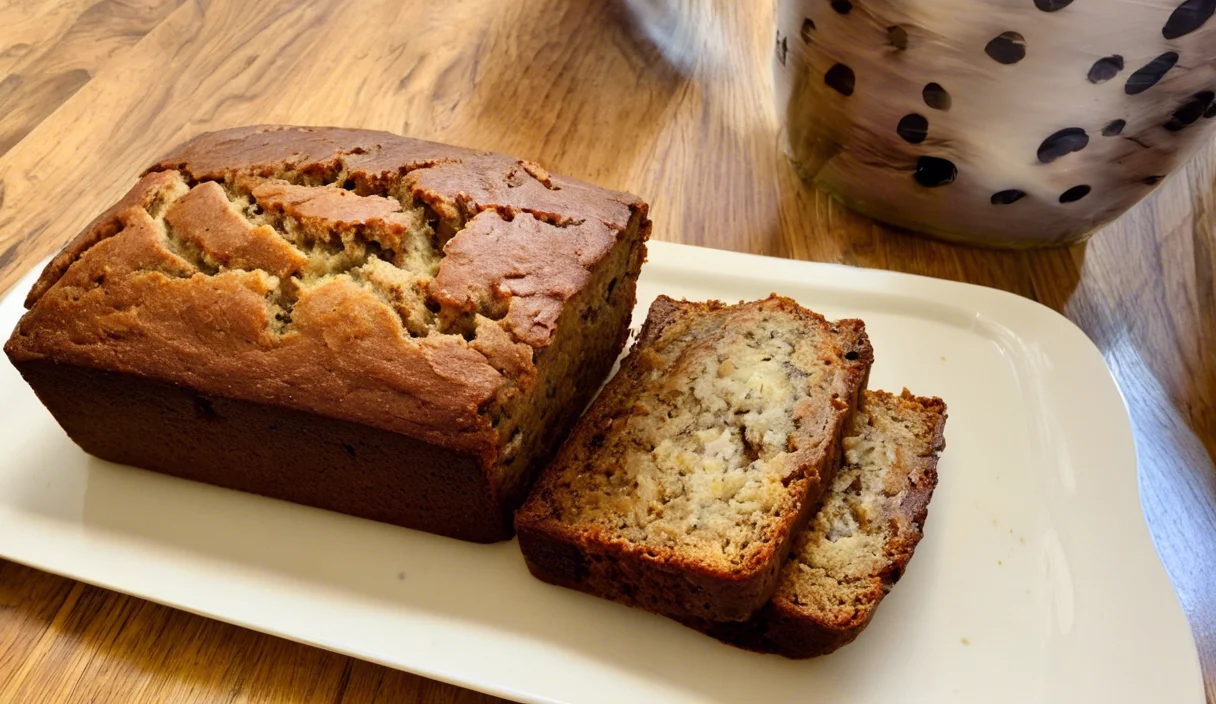Have you ever baked a batch of sourdough cinnamon rolls, only to wonder, why did my sourdough cinnamon rolls not rise? This can be incredibly frustrating after all the effort that goes into crafting sourdough rolls from scratch. But don’t worry! You’re not alone. There are several potential reasons why your cinnamon rolls might not have risen as expected. From underactive sourdough starters to overproofed dough, we’ll explore the most common mistakes and how to fix them, so you can achieve the perfect fluffy, delicious cinnamon rolls every time.
Understanding the Basics of Sourdough Cinnamon Rolls
Baking with sourdough can be a little tricky, especially when you’re expecting those cinnamon rolls to puff up and turn out light and fluffy. To help answer the question, why did my sourdough cinnamon rolls not rise, we need to dig into the basic factors that influence dough rise, starting with the sourdough starter, temperature, and humidity.
Ideal Temperature Range for Sourdough Starter to Avoid Rolls Not Rising
Temperature is critical to your sourdough starter’s performance. If your starter is too cold, it will not produce enough gas to raise the dough. Typically, the ideal temperature range for sourdough starter activity is between 70°F and 85°F. If you ask, why did my sourdough cinnamon rolls not rise, check whether your starter was within this range. Below 70°F, yeast becomes sluggish, and your dough won’t rise. Above 85°F, it may overactivate, leading to overproofing.
How Humidity Affects Why Sourdough Cinnamon Rolls Didn’t Rise
Humidity also plays a role in how well your dough rises. If the environment is too dry, your dough can form a tough outer skin, preventing a good rise. Conversely, high humidity can make your dough sticky and hard to handle. If you’re still asking, why did my sourdough cinnamon rolls not rise, the answer could lie in environmental humidity. Using a proofing box or covering the dough with a damp cloth can help regulate this.
How Flour Hydration Affects Why Your Sourdough Cinnamon Rolls Didn’t Rise
The hydration of your dough, or how much water is in the flour, significantly impacts its rise, much like how brining affects moisture retention in meats, as explained in this chicken brine recipe guide. Hydrated dough is easier to stretch and allows yeast to expand more efficiently. But too much water can make your dough collapse. If your cinnamon rolls came out dense, it might be due to improper hydration levels, leading you to wonder why did my sourdough cinnamon rolls not rise. Aim for 75% hydration (water compared to flour weight) to create the perfect balance for soft, elastic dough.
How Can You Tell If Your Sourdough Starter Is Strong and Active?
A well-maintained sourdough starter is key to fluffy cinnamon rolls. But, how do you know if it’s strong enough to do the job? First, check the rise after feeding. A strong starter should double in size within 4-6 hours. If it’s not doubling, that could be the reason why your sourdough cinnamon rolls didn’t rise. You can also check for a bubbly texture and a pleasant, tangy aroma — these are both signs of an active starter.
What Are the Common Signs of Overproofed Dough?
Overproofing is another common culprit behind unrisen rolls. When dough is overproofed, it can collapse before or during baking, leaving you with flat, dense rolls. Key signs include dough that doesn’t spring back when poked or has large, irregular bubbles on the surface. If you’ve ever asked, why did my sourdough cinnamon rolls not rise, it could be because the dough sat too long before baking.
Assessing Your Sourdough Cinnamon Roll Process
Making sourdough cinnamon rolls is a process with many steps, and small missteps along the way can lead to disappointing results. Let’s look into each part of the process to ensure success.
Did You Use a Mature Sourdough Starter for the Dough?
Using an immature or weak starter is one of the most common reasons why your sourdough cinnamon rolls didn’t rise. A mature starter is one that has been fed regularly and developed enough yeast and bacteria to raise the dough; here’s a detailed guide on how to work with sourdough starter for cinnamon rolls, like in this detailed sourdough cinnamon rolls recipe. If your starter isn’t doubling in volume after feeding, it may not be ready to use, but you can still put it to good use in these sourdough discard crackers.
Was the Starter Fed Regularly Before Using It for the Dough?
Feeding your starter regularly is critical, and using leftover sourdough in creative ways, such as these sourdough discard recipes, is a great way to avoid waste. If your starter has been neglected, it may not have the strength to raise the dough, leading you to ask why did my sourdough cinnamon rolls not rise. A well-fed starter is full of active yeast, while a neglected one may become sluggish and fail to ferment the dough properly.
Did You Allow Sufficient Time for the Dough to Autolyse Before Adding Other Ingredients?
Autolysis is a method of resting the dough after mixing water and flour but before adding salt and fat. This rest allows the gluten to form and relax, making the dough easier to handle. If you skip the autolyse stage, your dough may not develop the proper elasticity, which could be another reason why did my sourdough cinnamon rolls not rise.
How Long Did You Knead the Dough? Was It Kneaded Until Smooth and Elastic?
Kneading helps develop the gluten that traps the gas produced by yeast. Insufficient kneading can prevent the dough from rising properly. If your dough didn’t feel smooth and elastic before shaping, this could be why your cinnamon rolls didn’t rise. Always knead until you achieve the windowpane test, where you can stretch a small piece of dough thin enough to see light through it without it tearing.
Did You Let the Dough Bulk Ferment for the Recommended Time and Temperature?
Bulk fermentation, or the first rise, is where most of the dough’s structure is developed. If you didn’t give the dough enough time to ferment, or if the temperature was too low, that might explain why did my sourdough cinnamon rolls not rise. On the other hand, fermenting for too long can lead to overproofing.
Did You Shape the Rolls Carefully to Avoid Trapping Air?
Shaping cinnamon rolls seems easy, but trapping too much air in the dough can prevent proper rising. If you’re wondering why didn’t my sourdough cinnamon rolls double in size, it may be because too much air was trapped during the shaping process, causing them to collapse during baking.
Did You Use a Proofing Basket or Bowl That Was the Right Size?
A proofing basket or bowl that’s too large may cause the dough to spread out too thinly, preventing a good rise. On the flip side, one that’s too small can compress the dough and inhibit rise. Make sure to use a container that allows the dough to rise upward, rather than outward, if you want to avoid asking why did my sourdough cinnamon rolls not rise next time.
Did You Proof the Rolls in a Warm, Draft-Free Environment?
Proofing in a warm, draft-free space is essential. If the environment is too cold, your dough won’t rise properly, leading you to wonder why your sourdough cinnamon rolls didn’t rise. Aim for a proofing temperature of 75-80°F for the best results.
Did You Preheat the Oven to the Correct Temperature Before Baking?
Baking sourdough cinnamon rolls requires a fully preheated oven. If your oven is not hot enough when the rolls go in, they may not rise properly during baking. An under-heated oven could be why your rolls stayed flat. Make sure to preheat the oven to 375°F for a proper rise.
Troubleshooting Potential Issues
Now that you’ve evaluated your sourdough process, let’s troubleshoot some potential problems. Each issue could hold the key to why did my sourdough cinnamon rolls not rise.
Could the Flour You Used Be of Poor Quality or Low Protein Content?
The quality of flour matters, and the type of flour you choose can also influence why some consider sourdough to be a healthier choice, as explained in this article on why sourdough bread isn’t fattening. Using low-protein flour can result in weak gluten formation, which is essential for trapping the gas that causes your dough to rise. If you’ve used all-purpose flour instead of bread flour, this could explain why your sourdough cinnamon rolls didn’t rise as expected.
Did You Add Too Much Salt to the Dough?
Salt is essential in dough, but too much can inhibit yeast activity. If you added more than 2% salt based on the flour’s weight, it could have slowed down fermentation, leading you to ask why did my sourdough cinnamon rolls not rise.
Was the Dough Too Cold or Too Hot During Proofing?
If the dough was too cold during proofing, the yeast could have slowed down or stopped altogether. If it was too hot, the dough might have overproofed. Either extreme can result in flat cinnamon rolls and lead to the question, why didn’t my sourdough cinnamon rolls double in size?
Did You Overproof the Dough?
Overproofing occurs when the dough is left to rise for too long. This can cause the dough to collapse and fail to rise properly in the oven. If your dough was extremely soft and full of large bubbles before baking, this could be why your sourdough cinnamon rolls didn’t rise.
Could the Oven Temperature Have Been Too Low During Baking?
Oven temperature is crucial for that final rise, or “oven spring.” If the oven wasn’t hot enough, the rolls won’t rise properly, and you might wonder, why did my sourdough cinnamon rolls not rise in the oven. Double-check your oven settings and use a thermometer to ensure accuracy.
Did You Use the Correct Baking Time for the Size of Your Rolls?
If your rolls were underbaked, they could collapse after being taken out of the oven. If your cinnamon rolls were particularly large, you might need to extend the baking time. This can also explain why your sourdough cinnamon rolls didn’t rise properly during baking.
Did You Allow the Baked Rolls to Cool Completely Before Slicing?
Cutting into hot rolls can cause them to collapse as they haven’t set completely. If you sliced your rolls too soon, you might wonder why did my sourdough cinnamon rolls not rise after all. Always allow them to cool completely before cutting.
Tips for Success with Sourdough Cinnamon Rolls
Now that you’ve addressed the potential issues, let’s cover some key tips to ensure that your sourdough cinnamon rolls rise beautifully next time.
What Are Some Tips for Maintaining a Healthy Sourdough Starter?
The key to success starts with a strong, well-fed starter. Feed your starter regularly, at least once a day if kept at room temperature, or once a week if refrigerated. A well-fed starter is essential for avoiding the frustration of wondering why your sourdough cinnamon rolls didn’t rise.
How Can You Adjust the Hydration of Your Dough to Improve Rise?
Dough hydration is a balancing act. Too much water can make the dough too slack, while too little can result in a dense texture. Aim for 75% hydration to allow enough elasticity for a good rise without collapsing.
What Is the Best Way to Proof Sourdough Cinnamon Rolls for Optimal Rise?
Proof your rolls in a warm, draft-free environment at 75-80°F for best results. This helps activate the yeast and leads to a more even, predictable rise, reducing the chances of wondering why didn’t my sourdough cinnamon rolls double in size.
How Can You Prevent the Dough from Collapsing During Shaping?
To avoid trapping too much air and collapsing the dough, use gentle hands when shaping. Avoid pressing too hard, and make sure to roll the dough out evenly. This technique will help prevent the question, why did my sourdough cinnamon rolls not rise during baking.
What Are Some Signs of a Well-Proofed Dough?
A well-proofed dough will spring back slowly when pressed and show small, even bubbles on the surface. If you see these signs, you’re on the right track to avoid flat rolls and answer the question, why did my sourdough cinnamon rolls not rise.
How Can You Tell If Your Oven Temperature Is Accurate?
Use an oven thermometer to check if your oven is heating correctly. Even small variations can affect how well your cinnamon rolls rise, which could explain why your sourdough cinnamon rolls didn’t rise.
What Is the Best Way to Store Leftover Sourdough Cinnamon Rolls?
Keep leftover cinnamon rolls in an airtight container at room temperature for up to two days. If you store them correctly, you won’t have to wonder why did my sourdough cinnamon rolls not rise during a reheat.
Can You Freeze Sourdough Cinnamon Roll Dough for Later Use?
Yes, you can freeze sourdough cinnamon roll dough after shaping but before the final proof. When you’re ready to bake, let the dough thaw and proof until doubled in size. This ensures you won’t be asking why didn’t my sourdough cinnamon rolls double in size when baked from frozen.
What Are Some Common Mistakes to Avoid When Making Sourdough Cinnamon Rolls?
Avoid common errors such as using an underfed starter, overproofing the dough, and underbaking the rolls. These are all common reasons people ask, why did my sourdough cinnamon rolls not rise.
FAQs
What to Do If My Cinnamon Rolls Didn’t Rise?
If your cinnamon rolls didn’t rise, assess your sourdough starter’s health, proofing time, and environmental temperature. Ensuring your starter is active and dough is proofed at the right temperature can solve the problem.
Why Did My Sourdough Rolls Not Rise?
Your sourdough rolls may not have risen due to an immature starter, poor proofing conditions, or overproofing the dough. Adjusting the fermentation process will help fix this.
Why Is My Sourdough Not Rising High Enough?
Sourdough that doesn’t rise high enough could be under-kneaded or overproofed. Additionally, insufficient oven heat can prevent a proper rise.
Why Didn’t My Cinnamon Rolls Double in Size?
Cinnamon rolls that fail to double in size are often underproofed or shaped incorrectly. Make sure your dough is proofed in a warm, draft-free space for the best results.
By troubleshooting these common mistakes and following the outlined tips, you’ll never have to wonder why did my sourdough cinnamon rolls not rise again. Happy baking!





